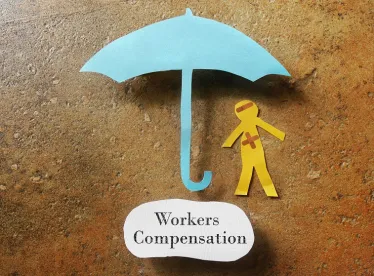The California Court of Appeal recently held that employees’ workers’ compensation decisions barred them from pursuing similar claims under the Fair Employment and Housing Act (“FEHA”) based on the doctrine of res judicata.
In Va Ly, et al. v. County of Fresno, three correctional officers alleged racial and national origin discrimination, harassment and retaliation. The officers filed workers’ compensation claims for psychiatric injuries arising from the alleged discrimination, harassment, and retaliation. Soon after, the officers also filed suit for violations of FEHA based on the same factual allegations. The superior court stayed the FEHA action pending resolution of the workers’ compensation proceedings. In all three workers’ compensation cases, the officers were not successful, as it was determined that the actions at issue were non-discriminatory, good-faith personnel actions.
Following resolution of the workers’ compensation proceedings, the employer filed for summary judgment in superior court, arguing the officers’ FEHA claims were barred by the doctrines of res judicata and collateral estoppel as the claims were litigated, or could have been litigated in the workers’ compensation proceedings. The trial court found in favor of the employer on the basis of collateral estoppel because the officers had already been given the opportunity to litigate the same issues that were implicated in the workers’ compensation proceedings.
On appeal, the California Court of Appeal found that summary judgment was appropriate on the basis of res judicata. In the court’s analysis, it noted that while an employee claiming discrimination or harassment may pursue remedies via FEHA or workers’ compensation, the employee could not relitigate the same claim in two forums. The court held that res judicata barred the officers from relitigating their claims because: (1) their workers’ compensation cases were final and on the merits; (2) the two proceedings involved the same parties; and (3) most importantly, the two proceedings involved the same causes of action. Although the officers argued that the proceedings involved different causes of action, the court held that the underlying primary rights at issue were the same. As the court noted: “The effect of the employment actions on their mental states is at the heart of both their workers’ compensation and FEHA claims. While the forums are different, the harm suffered is identical and therefore the same primary rights are implicated.” In both the workers’ compensation cases and the FEHA action, the officers sought to vindicate the same primary right – the right to work in an environment free of discrimination, harassment, and retaliation.
It is worth noting that the court’s analysis was not affected by differences between the two avenues of relief – namely, it was of no consequence that the standard for recovery under FEHA may be broader than that for workers’ compensation claims.
The court held that, while an employee may seek redress for the same injury in a variety of ways, once a cause of action has been adjudicated, it cannot be relitigated in another forum: “While workers’ compensation was not plaintiffs’ exclusive remedy, once they elected to pursue that remedy to a final, adverse judgment instead of insisting on the primacy of their rights under the FEHA, [workers’ compensation] became the exclusive forum to recover for their injuries.”
In light of this decision, employers should be aware that employees may pursue their claims through various avenues, including formal litigation and/or workers’ compensation cases. Because a formal adjudication of rights in one forum can bind the parties in a parallel proceeding, employers should not only pay close attention to how employees are seeking to vindicate their rights, but also examine the differences between the selected forums. In situations like Ly, where the standard of recovery may differ from one forum to another, employers should tailor their defense strategy to increase the likelihood of a favorable outcome in one forum which may have preclusive effect in the parallel proceeding.



 />i
/>i

